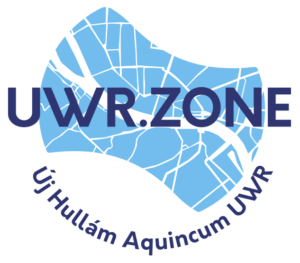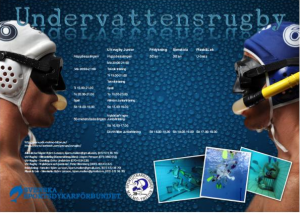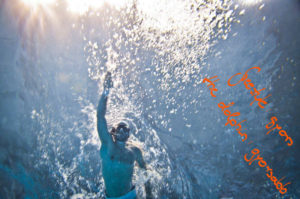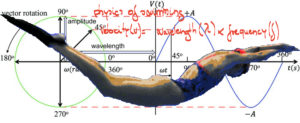Learn everything about UnderWater Rugby. History, rules, tactics, gear and beyond.
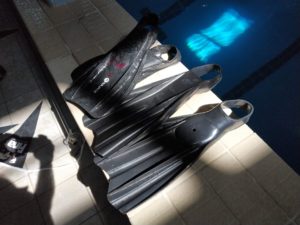
A pair of Najades and Ares, both size 3
You may find a great variety of the required ABC gear not only at diving shops but even at supermarkets and of course online, just a few clicks away. But not all fins, masks, and snorkels are fit to play UWR, to be honest, some sets are just hazardously trashy. The most expensive diving gear may also not be the best pick for rugby, but the best rugby kits won’t disappoint in the sea either.
Let’s see the lineup of diving products from a rugby player’s perspective!
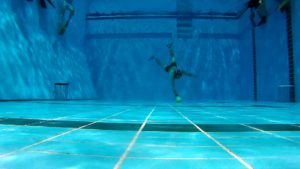
Setting up a 3vs3 game
Everyone starts off as an attacker, with the exception of freedivers, who can and should play goalie first!
But when the goals are 8 meters away, the classic roles don’t mean much. What matters the most is the sequence and timing of the players diving. It boils rugby down to a constant dilemma of taking a risk or playing it safe.
As time passed, people started moving to other places for jobs, getting families, training went down, we lost our pool (due to years of underset maintenance) for about a year and a half, losing the Champions Cup, the National championship, and Felix Cup. During those years we, to my memory alone lost 4-5 beginners of ages 12-25 that would potentially have become really good. That is something that many of us deeply regret today.
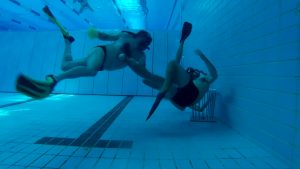
With less than 8 players one goal is enough to train. Training fits in 1/3 of 2 lanes leaving more space for others to swim and more money in the club's pocket.
Let me remind you, that most training guides assume a full team training at regular times in a proper diving pool, with a coach on the surface. Furthermore, they assume that all individuals within the team coached share the same goals such as being champions.
But few teams start like that.
There is very little literature on the topic of training UWR, most clubs build their training on the base of trial and error and try to learn the methods of other clubs. This training concept may be helpful for new clubs in developing their own training methods.
"The more complex a movement is, the more it's worth to take it apart to it's elements in order to learn it. Googles and snorkel are required so that breathing, which coordinates the whole process, can be left to be practiced at the end, while fins are to aid proper body pose and technique. The board allows the movement of legs and arms to be practiced separately, and I've noted swimsuits too, because too often you see newbies wearing beach shorts at the pool which act like flimsy breaking chutes in the water."
By swimming like a backstroke swimmer coming on the wall with just enough space for the dolphin kick below, most of the blind spots disappear.
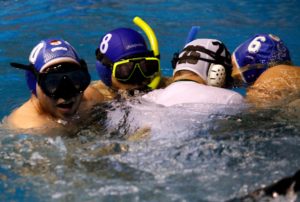
Kisapuka holding up a scrum against 3 pro polos players of Honvéd at a friendly polo-rugby match
Attacker. Defender. Goalie.
Scout. Demo. Heavy.
Little help with taming the waves.

